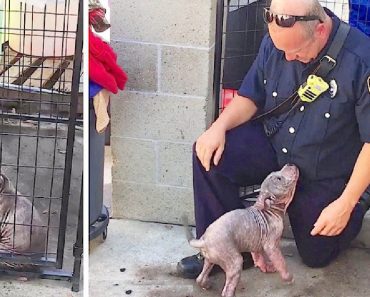When you add a dog or cat to your family, it can be fun and exciting. However, along with the joy your new pet brings comes worries for every pet parent: What if she gets sick? What if she slips her leash and something happens?
Questions like this can keep you up at night.
Unforeseen medical care can be a major stressor, not only financially, but emotionally as well. One was to protect yourself against high vet bills is pet health insurance. Does that mean signing up is the right choice for everybody?
Here are a few things you need to know about pet health insurance before you choose to buy it for your furry friend.
How does pet health insurance work?
The pet insurance marketplace has numerous different providers just like human health insurance. Liz Watson, chief marketing officer at Crum & Forster Pet Insurance Group, providers of ASPCA Pet Health Insurance explains that once you enroll and choose a plan that is right for your pet and your budget, you will be reimbursed for a percentage of future covered veterinary costs once the deductible is met. Many insurance plans let you use the licensed veterinarian of your choice, as long as they’re practicing within the U.S. or Canada.
The pet healthcare payment process is more involved than human health insurance. “In most cases, pet parents pay their veterinarian and then submit the invoice to us with their claim,” Watson said. “This can be done online, via our mobile app, mail or fax. We then reimburse a percentage of the covered services, after the annual deductible. The reimbursement percentage — 90, 80 or 70 percent — is selected by the pet parent upon enrollment.”
How much does it cost?
“Species, breed, age, zip code and the plan selected are the basic factors that determine the cost of pet health insurance,” Watson explains. “In addition, consumers can adjust the deductible, reimbursement percentage and annual limit to find a plan that fits their budget.”
Each individual insurance plan will cover different services. Sometimes, less expensive plans will offer less coverage. The important thing is to understand what is covered and what is not. Plans offer coverage for serious or chronic illnesses, like cancer or allergies, injuries such as poisonings and broken bones, surgery, X-rays, routine wellness care vaccinations, annual checkups and flea and heartworm management and holistic treatments, such as acupuncture and hydrotherapy.
Dog species also play a role in cost. “Dogs and cats are the most commonly covered pets worldwide,” the North American Pet Health Insurance Association writes on its site. “Of all pet health insurance policies currently in force in North America, 85 percent are for dogs, while the remaining 15 percent are for cats.” Typically, coverage for cats is slightly less expensive.
Most policies will not cover pets under the age of 8 weeks old, while some policies may refuse to cover senior pets. Signing up your pets while they are puppies may help them secure insurance for life before an emergency situation. Most insurance plans will not cover treatment of a preexisting condition and may be conditional for certain inherited medical issues.
Is it worth it?
“It’s common to pay $300 a year or more for pet insurance,” Robert Krughoff, president of Checkbook.org said. “Over the life of a dog or cat that might be $5,000 or more. Most people are not going to have a big expense like that.” If you’re budget-minded, starting an emergency fund for a pet can be an excellent alternative.
Every dog and owner is different. If your dog likes to eat things he shouldn’t or play roughly with other dogs, you might want to consider a plan that covers emergencies. When our pets age, new health issues may flare up, and miracles can be worked to prolong our pets’ lives making it even more difficult if you simply can’t afford treatment.
Pet health insurance premiums may very well end up being higher than your dog or cat’s vet bills over the course of their lifetime. If you do not have the funds to cover a vet visit that can set you back thousands of dollars, and a monthly payment is more manageable, pet insurance is something to consider.
What’s the next step?
Take your time and shop around before settling on a plan. Ask pet-owning friends or your veterinarian for suggestions, and check reviews online. Be sure to consider whether the plan will meet your pet’s needs now and in the future, before making a final decision.
If you know someone who might like this, please click “Share!”






